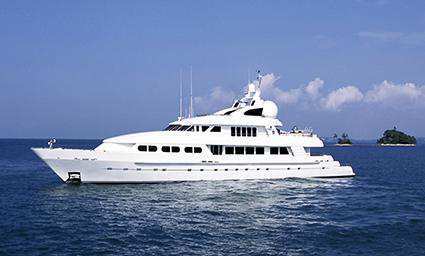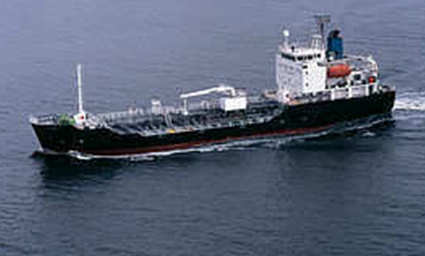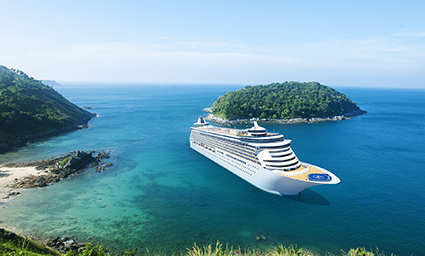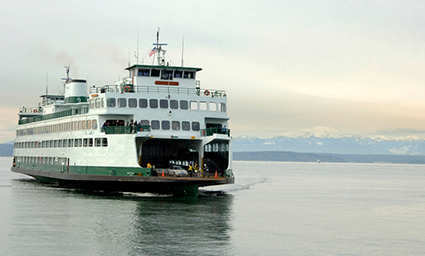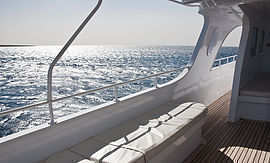
A particularly demanding sector where, the increased likelihood of infestations, structural particularities and the need for immediate tailor-made solutions, coupled with international coverage are only some of the elements that combine to make this sector idiosyncratic in relation to pest management.
In an enclosed environment of a ship, conditions favour these organisms jeopardising health of any person onboard. This situation is magnified during long periods of sail where there is no possibility of immediate intervention treatment. More important however may be the risk of pest transportation to new environments, where they did not previously exist, with the likelihood of natural balance disturbance and disease transmission. A typical example is the transportation of mosquitoes which transmit malaria.
Defon started its journey in 1961 by catering to the needs of the shipping industry and continues to this day by providing its services worldwide with an effective task force in virtually any port where there is a demand and for as long as required. With the experience gained through this association, combined with the latest knowledge, the company developed an Integrated Pest Management (IPM) system that can meet the challenges of this sector. Defon’s specialised team, always alert and ready, provide services by adjusting to the needs of the client and coordinating with other onboard activities. As a result, health safety of all crew and passengers, along with the integrity of the merchandise is ensured in cargo ships, cruise liners, yachts, etc.

Defon has flourished within the shipping industry since 1961, ensuring health safety of all crew and passengers, along with the integrity of the merchandise in cargo ships, cruise liners, yachts, etc.
This is a particularly demanding sector where, the increased likelihood of infestations, structural particularities and the need for immediate tailor-made solutions, coupled with international coverage are only some of the elements that combine to make this sectoridiosyncratic in relation to pest management.
Time constraints that apply when ships make stopovers during their journey, for a short and specific time, such as for maintenance and supplies, constitutes common practice. Then, many people try to perform different tasks at the same time, often in limited space. Inspection and treatments for pests may also be requested during these stops, taking advantage of the ship’s proximity to shore.
In an enclosed environment of a ship, conditions favour these organisms jeopardising health of any person onboard. This situation is magnified during long periods of sail where there is no possibility of immediate intervention treatment. More important however may be the risk of pest transportation to new environments, where they did not previously exist, with the likelihood of natural balance disturbance and disease transmission. A typical example is the transportation of mosquitoes which transmit malaria.
Reasons to control pest infestations
Some of the most important reasons to control pest infestations within ships include:
- Protecting the health of any person on board that could be at risk in a pest-infested environment, by:
- preventing direct transmission of diseases from pests to humans, e.g.
- Fleas are usually transported to ships via rodents, but also dogs, cats and humans. They may transmit microbes through their bites such as: Rickettsia typhi bacterium which causes murine typhus, Yersinia pestis bacterium which causes bubonic plague, etc.
- mosquitoes transmit, protozoa of the genus Plasmodium which causes malaria, Zika virus, etc.
- preventing indirect transmission of diseases from pests to humans caused through contamination of food and/ or surfaces with pathogens, e.g.
- food poisoning caused through transmission of E-coli bacteria via cockroaches, flies, etc.
- preventing allergies to humans caused by the exuviae and the organic residues of arthropods such as cockroaches and dust mites (in heavily infested ships it has been observed that crew suffer from asthma).
- Preventing a loss of merchandise due to damage and/or destruction of them and/or their packaging caused by pests.
- Preventing damage to ships and their equipment that could also jeopardize the safety of any person on board, e.g.
- rodents may gnaw at wiring causing short circuits and even fire.
- Protecting any person on board from the distress caused by pest presence and from the possible panic that is intensified in confined spaces.
- Preventing loss of customers and damage to reputation that occurs when the news of pest presence is communicated, resulting in a further decline of clientele, e.g.
- in passenger ships.
- Preventing the imposition of sanctions by the health authorities that range from fines up to suspension of the operating permit and prosecution of the owners.
Pests relevant to this sector
Pests that are frequently detected and cause major problems within ships are listed below. For additional information refer to section: Pest library.
Rodents (mice, rats)
Cockroaches
Flies
Drosophila
Ants
Stored product insects
Bedbugs
Fleas
Lice
Ticks
Dust mites
Mosquitoes
Termites and other Wood-boring insects.
The solution offered by Defon
Defon, based on years of experience, addresses the above issues by implementing its Integrated Pest Management (IPM) system which is adapted to the specifics of ships. The following is a general description of this system’s methodology, detailing some characteristic examples.
-
Site survey which focuses on:
- Entry points for pests such as bow doors, ramps, open doors, portholes, ropes tied to the pier, etc. Ports are usually highly infested areas and can pose a high risk of pest transmission to ships.
- Garage areas. Pests may also get transported through vehicles to ferries.
- Animal cages. Fleas and ticks may also be transported to ships via animals.
- Areas with standing water where mosquito larvae may develop, e.g.
- in lifeboat covers, etc.
- Hygiene standards, such as cleaning methods and schedules.
- Food preparation, serving and storage areas such as galleys (kitchens), canteens, dining rooms, etc. For additional information on this topic refer to Restaurant, Catering and Food industry sector.
- Availability of adequate de-boxing facilities for checking supplies for pests (Most ships often load goods from various suppliers in different parts of the world, resulting in increased probability of infestation.)
- Garbage disposal areas.
- Public and supporting areas such as reception areas, halls, gyms, stores, medical room (ship’s hospital), laundry rooms, storage areas for equipment and materials, luggage areas, staircases, toilets, etc.
- Accommodation areas (passenger and crew cabins, etc). These areas are also checked for bedbugs that can be introduced through luggage (the bite of these insects causes itching and great discomfort).
- Bridge, control room (cargo control room, ballast room, etc.) and engine room.
- Inadequacies to proofing, e.g. damaged or corroded bulkheads and deck head panels that can provide shelter for pests.
- Difficult areas to access, such as behind bulkheads and deck head panels. The older the ship, the higher the danger of pests sheltering in those areas.
-
Development and implementation of the Action plan.
The action plan varies depending on the type of ship and adapts to the specific requirements of the conditions that may apply at that moment. For example during stopovers, when the available time is limited, inspection and treatments are organized so that they are executed with speed and accuracy whilst in coordination with other onboard activities.
-
Service report submitted within the Report folder.
This sector presents a high risk of infestations and an increased public health interest. Preventative actions are the best tool to avoid infestations and to ensure hygiene as they can stop the spread and establishment of pests. Therefore, it is important for professional pest management to be included in the ship’s schedule.
Specialized Fumigation services are usually offered for the protection of cargo in holds, to containers, but also for the entire ship. Defon, has developed a unique method of fumigation offering extra protection from the side effects of fumigants especially for luxury ships.
As part of Defon’s Integrated Pest Management (IPM) system, support can be offered to ship’s crew through Consultation Services with education and training regarding prevention of pest problems and best hygiene practices.
Defon is known worldwide for setting up an effective task force in virtually any port where there is a demand and for as long as required. This flexible approach to business has become the backbone of the company's reputation for global responsiveness and efficiency.
The company’s specialised team, always alert and ready, provides services by adjusting to the needs of the client and coordinating with other onboard activities, whilst keeping health, safety and the environment in mind. Upon completion of work, a pest control certificate is issued which can be presented to the port health authorities at any destination.
Thus, protection is ensured for long periods away from port with Defon’s certification.
